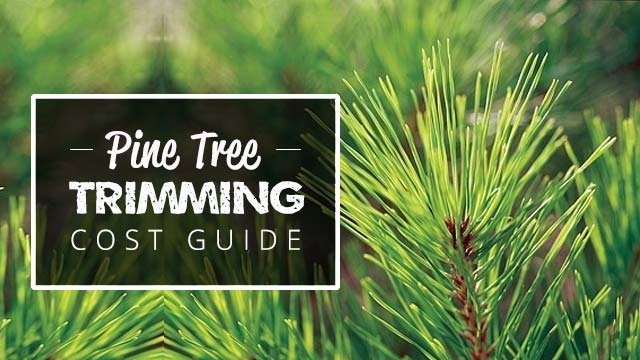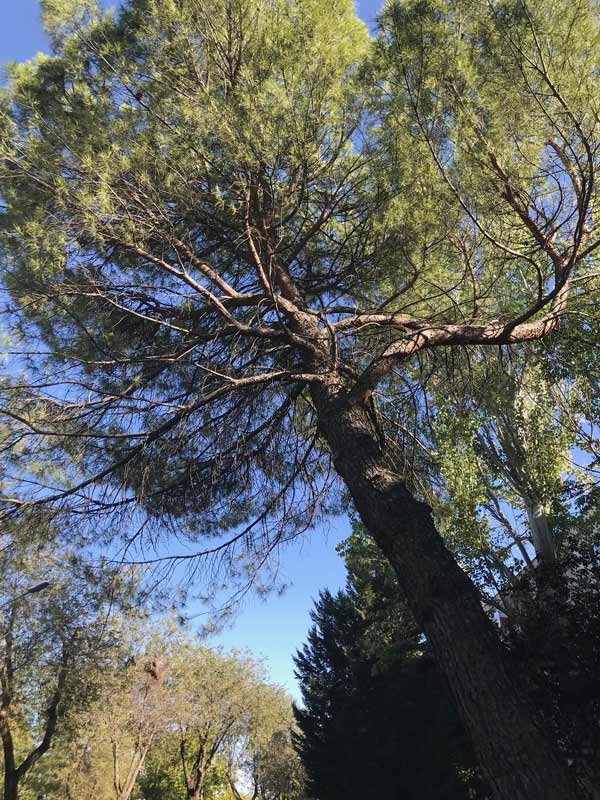The expense of trimming a pine tree can differ based on the variety of pine, its height, and the amount of trimming required.
You can expect to pay an average of $645 to trim a pine tree. Pine trimming costs range between $340 and $1,350 depending on the tree size and the type of prune being performed.
The best way to approach this is to break pine trees down by size and type.
What we cover
TogglePine tree trimming cost by size
I am basing the prices for trimming 30% of the tree’s foliage. You can expect to pay about $150 to $190. In most cases for conifers, they will be topped as they are getting too tall or other times trimmed into a hedge.
White, Norfolk Island, and Radiata Pines will have a canopy lift to remove lower branches. This is a fairly quick and straightforward job.
These types of pine trees are quite easy to trim. In most cases, the lower branches need to be removed. As they are close to the ground, the cost is minimal. If you are getting the tree-topped it will cost more.
For trimming the bottom 5 rows of lower branches on White and Norfolk Pines you would pay around $340 – $490. Radiata Pines are a little trickier to work on and would cost closer to $750 to be trimmed. Depending on how much you plan to remove will determine the price.
You are best contacting a certified local arborist for a firm price on your particular tree, but the above prices are a good ballpark guide.
Radiate pines are probably the most expensive to get trimmed. The reason is that they have such large thick branches, unlike the other examples. The below prices are for trimming $15 – 25% of the foliage with good access to the tree and a few obstacles.
White | Norfolk Pine – $500 – $850
Radiata Pine – $ 750 – $1500
You will need to bear in mind that a full-grown mature pine tree at the rear of a property with poor access will likely cost more to prune. The same is true for branches being pruned in awkward positions like over a power line, a house, a fence, or a shed.
Best time of year to trim pine trees
Pine trees are like most other trees in that they should be pruned towards the end of winter. The main reason is that they are less likely to fall victim to a fungus or beetle attack than they would in summer.
This gives them a chance to begin to heal in early spring.
Bonus: An interesting fact that most don’t know is that tree trimming is much cheaper in winter than in summer. The reason is supply and demand. There is a lot less work for arborists, so they tend to hand out cheaper quotes in the hope of winning more work to see them through the colder months.

Cost to cut down and remove Pine trees
The cost to cut down and remove pine trees again varies depending on the size of the tree and its location.
The average cost of pine tree removal is $1,377, but you will get a better idea if you have a look at our comprehensive Pine tree removal cost guide.
In it, we break down the price for the 3 main types of pines by size.
Can you top a pine tree?
You are fine to go ahead and top conifers. Most types of conifers will not re-shoot from the trunk so topping the tree is a great way to keep them under control.
The same is not true for White/ Yellow pins, Radiata, and Norfolk Island pines. They respond by shooting out suckers from the tops of the cuts which will grow into new branches.
The catch is these branches are not safe as they are not properly attached to the tree like other branches. They grow out of the bark so after a couple of years of growth, they become too big to support themselves and they come away damaging anything in their path.




Cost to cut bottom branches off a pine tree
This is referred to as a canopy lift and is by far the cheapest type of pine tree trim. The reason it is so cheap is in most cases the branches are close enough to the ground for the tree surgeon to trim them without climbing using a pole saw.
This is good news for you because it saves them time and money.
To remove the bottom 5 rows of lower branches you will pay between $150 and $760 depending on the size of the tree.

Should you cut dead branches off a pine tree?
Dead branches are not only a hazard to persons and property when they eventually fall from a pine tree, but they are also a health hazard to the pine itself.
Pine trees have a thick and sticky sap that protects them from borer beetles that try to burrow into the bark. They drown before making it through.
Once a branch has died, it acts as an open road for any invasive pest to burrow its way into the tree and avoid the protective sap.
By removing the dead branches you allow the tree to heal over the open wound protecting itself from attack.
How much do they charge per hour?
Tree-cutting services actually charge by the job and not the hour. The reason is that they all have different crew sizes. One company might do the job in 45 minutes, but it takes a one-man-band 4 hours for the same job.
The cost of the prune will be the same, but it would work out to be different hourly rates.
Unlike a lawyer or an accountant, Arborist Tree Services needs to view the job and give you a price to complete. This actually works out better for you like no matter how long it takes them, they have to stick to their original price. No surprises.
How often should pine trees be trimmed?
This will depend entirely on the purpose of the trim. If you want to perform a canopy lift and remove the low branches of your pine, this is really something that needs to be done once. However, a conifer might need topping every few years.
To keep a mature tree in check and healthy, I would suggest getting an arborist out to inspect the tree every 5 years and perform a light prune of now more than 15 – 20% of the tree’s canopy.
This will give the tree a real boost and allow it to bolster its defenses and send out some new growth.










